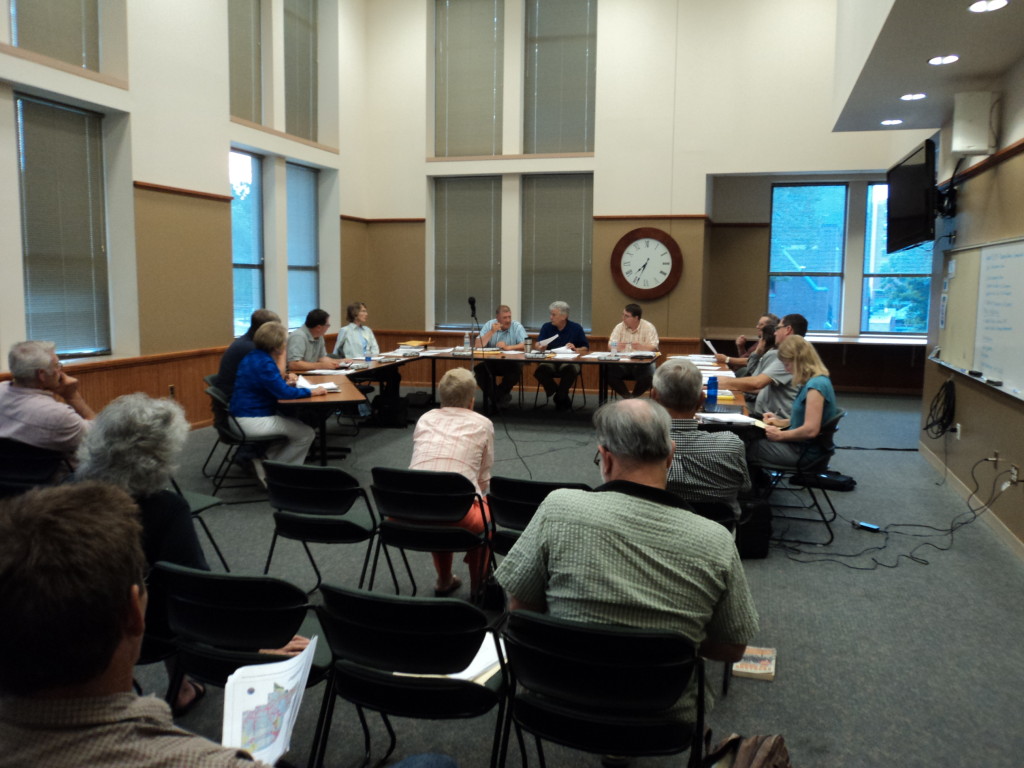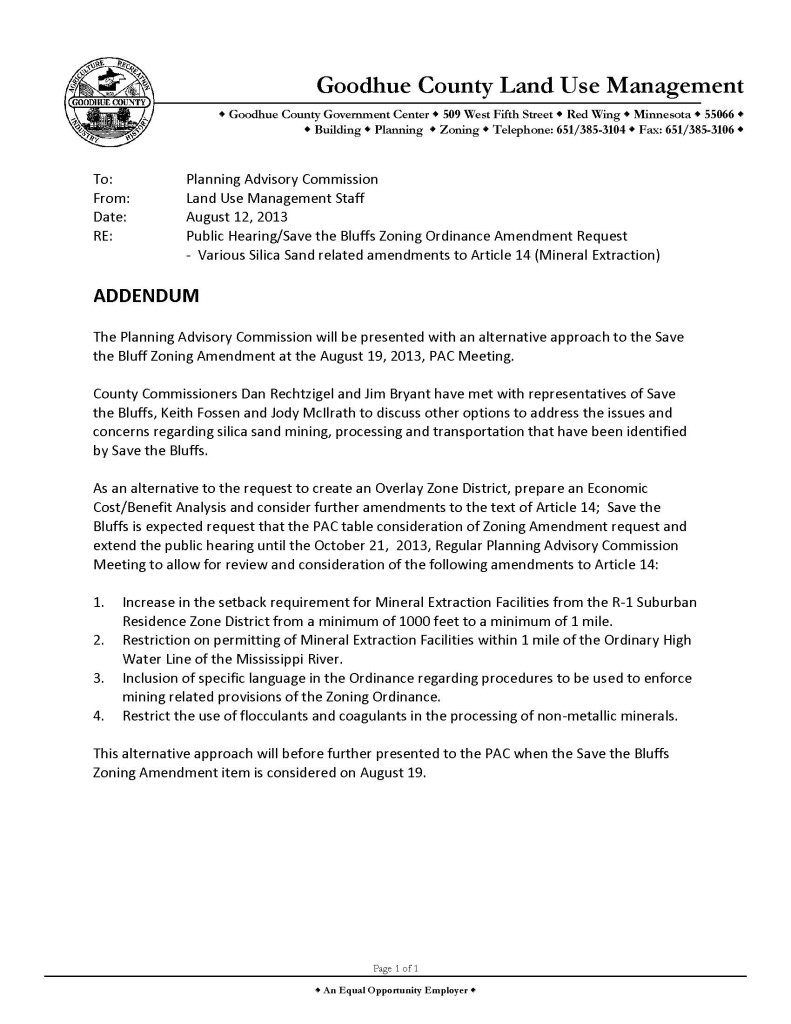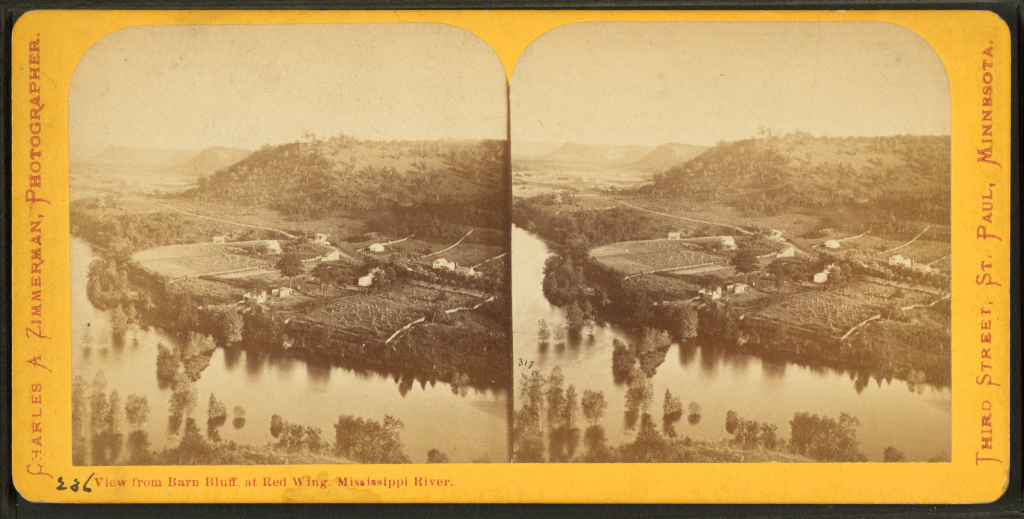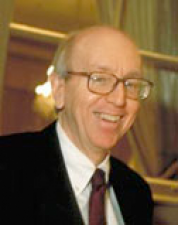Most interesting Goodhue PAC meeting
August 20th, 2013
Very interesting meeting last night, a meeting of the Planning Advisory Committee of Goodhue County. It’s unfortunate there weren’t more people there. I wasn’t going to go, but I went to support Marie McNamara’s request to the PAC to send a letter to the Environmental Quality Board, Pollution Control Agency, and Dept. of Natural Resources to appoint a Rulemaking Advisory Committee. Getting the local governments and public involved in the state process is something I’ve been on for a long time, and it needs to have a better result than the composition of the PUC’s Certificate of Need and Siting/Routing rulemaking committee which has only one member of the public, one attorney who represented a township in a transmission proceeding, two attorneys (including moi) who represent citizens groups, and 18-20 representatives of utilities.
It was a quick request:
Requests for an Advisory Committee must be made because the MPCA and DNR stated in their Notice that they didn’t anticipate having an Advisory Committee:
Minnesota Department of Natural Resources_Notice of Rulemaking
So now the next step at the County is to get Board approval and get a request out in time for the EQB’s September 18 meeting, which should not be a problem.
You can send a request too! Send a short email, with Subject line “EQB, MPCA and DNR Silica Sand Rulemaking” to:
heather.arends@state.mn.us; tom.landwehr@state.mn.us; nathan.cooley@state.mn.us; John.Stine@state.mn.us; Jeff.Smyser@state.mn.us; bob.patton@state.mn.us; kate.frantz@state.mn.us; dave.frederickson@state.mn.us
Marie McNamara has done a superb job over the five years she’s been working on wind issues. We’ve been working together for a long time now, and she’s always keeping the big picture in mind. She’s worked hard to educate regulatory bodies, from Goodhue County to the PUC, DNR, USFWS, FAA, and has done so with the utmost integrity. One of her mantra’s is “how will this affect my neighbors,” and she’s felt an obligation to keep in this fight, deal with the big policy issues and assist others in similar situations in Minnesota and across the country to participate in the process. Watching her address the PAC Committee, explaining her work on the PUC’s Rulemaking Advisory Committee, how it is the place for people to have their ideas heard, relating it to their work on the County wind ordinance, I was so gratified to see her increasing ability to independently navigate the system and encourage others to step up. She’s open and transparent in her approach and has a broad range of knowledge of process and specifics. She’s been before the PAC and County Board so many times, and has worked hard to inform the record and done a good job of it. She’s been there, done that, and is just the one to ask them to support an Advisory Committee for silica sand rulemaking.
Dan Rechtzigel and Bernie Overby were agin’ it, and Bernie was convinced that people who participate do so from one point of view, and his concern was it is only opposition to projects point of view at the table, HELLO — reality is that it’s severely weighted in favor of industry. He should go to a rulemaking committee and check it out.
I appreciated Joan Volz’ explanation that rulemaking input has to happen soon, because once it’s released, it’s pretty tough to change. In my experience, and actually, as established in the rulemaking process, the public comment period after the release of the draft is not an opportunity to do much other than generate some dead trees or use some electrons and brain cells, and that the draft is pretty much set in stone because they cannot approve a rule that is “significantly” different from the draft. That’s how it is.
Bottom line: The PAC asked staff to check it out and report to the Board, which meets the first week of September, ample time to get a request to the EQB prior to their meeting on September 18, 2013 — motion passed unanimously. I’m confident they’ll get it done.
As for the Save the Bluff’s Application, they had an “alternative approach” on the agenda based on a letter dated August 12 regarding a past meeting between the Applicants and two commissioners (click for larger version):
It’s good that there was a discussion in public about this “alternative approach” as it was a result of private negotiations between Keith Fossen and Jody McIlrath, and Dan Rechtzigel and Jim Bryant, alluded to on p. 11 of the packet in the letter above. Dan went too far, who at one point discussing these negotiations said, “on behalf of the Board…” He’s the swing vote in this situation, but he can’t speak for the board, particularly on an Application where’s there’s action pending. He should know that. The good news is that at the very beginning, Lisa Hanni provided an opening where Save the Bluffs could avoid withdrawing the original Application. They said they did not want to withdraw the application, but to focus on the 4 items, see if that can resolve the issues.
Dan Rechtzigel said that the Applicants reached out to him to talk about whether there was any possible resolution and that they came up with four areas they could talk about and come to agreement, with the acceptable items of agreement being:
This is where Dan said (rough quote), “these four areas are where we could find some common ground, on behalf of the Board…” and that these points are not intended to be final wording. In discussion of the cost-benefit analysis, Dan said, “I’m not hearing an urgent request for that.”
At one point, Bernie Overby said, “I think discussions were very productive.” Was he part of this?
There were a few comments from the public, first from a contingent from Belvidere who were very upset about not getting notice that the public hearing was cancelled. Also, after they spoke, Planning Advisory Commission Brandon Schrader, who had recused himself, tried to speak, and I had to shout out an objection, because someone who recuses himself can’t be participating, not just in the decision, but also in the discussion. That’s pretty basic procedure, but Rich Bauer, the current chair, didn’t stop him at the last PAC meeting I went to and didn’t here. No choice but to do it, and thankfully Marie knows him and had a chat about that which I hope he heard, I think he really didn’t know that wasn’t permissible. Bernie Overby didn’t understand either and started on a “free speech” rant. He needs some procedural instruction.
Belle Creek’s Township Supervisor Tom Gale was there too, and he said he didn’t receive notice and wasn’t too pleased. Bernie Overby made a remark about people showing up for the first time, and apparently he didn’t know Belle Creek township is interested, is interested in water protections, and has had a representative, usually Tom, at most of the sand related county meetings. He had a copy of the packet and wanted to know more about the “alternate approach” and what it does for Goodhue County. Belle Creek was one of the townships asked to develop a supportive resolution, as Belle Creek had requested of others during their struggle about the AWA Goodhue/New Era wind project. Belle Creek township is a farming township and they are very concerned about water, the surface water and the aquifer, and assuring safe and sufficient water for the farms in the township. Belle Creek Watershed District is one of the few, three, I think, formal Watershed Districts in the state. The Watershed District is a formal local unit of government, and should be included in the “consultation” by the state about silica sand mining Standards and Criteria, but that’s another topic… Belle Creek Township would likely be very supportive of regulations that protect the water supply.
Alan Muller brought up the point that #1 of the four points is a one mile setback from R-1 Suburban Residential, and asked what percentage of R-1 Suburban Residential land was in Goodhue County, what percentage of residents/landowners. Get out your magnifying glass and look for the tan R-1 Suburban Residential areas (click for larger map):
Ultimately, Bernie Overby made the motion to table the Save the Bluff’s request, to send it to the Mining Study Committee, to add the four items to the agenda, and the Applicants were to be directed to work with the Committee. It was passed unanimously.
There will be two public hearings on both the original Application and the 4 additional points, first before the Planning Advisory Committee and then before the County Board. These public hearings will be noticed, hopefully better than this meeting and the cancellation of the public hearing!
By the way, Bernie Overby, what’s Ryan hauling in that stainless trailer behind the shiny lime green truck with “Overby Trucking” on the door?
Locals must adopt sand Standards & Criteria
August 17th, 2013
Local governments need to get involved in the development of frac sand mining Standards and Criteria, and once the state develops them, local governments must ADOPT them and incorporate them into their ordinance in order for the Standards and Criteria to apply.
The frac sand mining bill passed last year required that the Environmental Quality Board develop Standards and Criteria, in specific categories, for silica sand mining, processing and transportation by October 1 2013, that the Board SHALL develop, “in consultation with local units of government,” the standards and criteria, and then… HERE’S THE CATCH:
These standards and criteria may be used by local units of government in developing local ordinances.
“MAY” … not SHALL.
Our job: Push local governments to “consult” and to adopt standards and criteria, either the EQB’s or more stringent ones!
And there’s a job for local units of government: Work “in consultation” with the state to develop the standards and criteria for mining, processing, and transporting silica sand,” and then the local units of government need to ADOPT them. They won’t just automatically apply.
Please urge your local governments to get involved with the EQB’s process:
1) CONSULTATION — Ask local governments to join in the EQB’s process, hold public meetings in the area, weigh in with suggestions for language — quickly, before draft is done in September. This is where input has the most impact Send input to: Jeff.Smyser@state.mn.us; bob.patton@state.mn.us; kate.frantz@state.mn.us; dave.frederickson@state.mn.us
2) ADOPT STANDARDS AND CRITERIA. The EQB’s Standards and Criteria don’t apply automatically — they must be adopted into local ordinances. Adopt the Standards and Criteria developed by the EQB, and adopt stricter standards where desired.
Here are some specific suggestions filed with the state agencies on August 2 when they were in Red Wing and Winona:
You can use the CASM Comments as a guide and write your own standards on issues important to you!
LOCAL GOVERNMENT CONTACT INFO – just cut & paste for your area:
Goodhue County:
ronald.clifford.allen@gmail.com; jcbryant@kmwb.net; rudy396@yahoo.com; rsamuelson@sleepyeyetel.net; ted.seifert@hiawathamedical.com; steve.betcher@co.goodhue.mn.us; scott.arneson@co.goodhue.mn.us
Red Wing’s City Council & Staff:
dan.bender@ci.red-wing.mn.us;jsebion3@gmail.com, lisa.bayley@ci.red-wing.mn.us; deanhove@charter.net ; michael.v.schultz@charter.net; peggy.rehder@ci.red-wing.mn.us; ralph.rauterkus@ci.red-wing.mn.us; marilyn.meinke@ci.red-wing.mn.us; kay.kuhlmann@ci.red-wing.mn.us
Wabasha County:
rhall@co.wabasha.mn.us; droschen@co.wabasha.mn.us; dspringer@co.wabasha.mn.us; mwobbe@co.wabasha.mn.us; dharms@co.wabasha.mn.us; jnordstrom@co.wabasha.mn.us; kkrause@co.wabasha.mn.us
Lake City:
jbeckman@ci.lake-city.mn.us; cadancinbear@yahoo.com; mspence1967@gmail.com; mattpowers55041@hotmail.com; philipgartner@embarqmail.com; marylouwaltman@embarqmail.com; gene.j.durand@gmail.com; rjohnson@ci.lake-city.mn.us; rkeehn@ci.lake-city.mn.us
Wabasha:
wabmayor@gmail.com; j.f.friedmeyer@gmail.com; stephenx@wabasha.net; b5c7ways@wabasha.net; lschoen83@gmail.com; retiredwabashachief@gmail.com; awharton@wabasha.net
Townships: Look up your township officials — there are SO many townships that you’re on your own here!
The EQB needs local governments’ input on so many things. Pick the ones you’re concerned about and let local officials know it’s important to you.
From Minnesota Session Laws 114, Sec. 91 (someday soon to be Minn. Stat. 116C.99):
The standards and criteria must include:
(1) recommendations for setbacks or buffers for mining operation and processing, including:
(i) any residence or residential zoning district boundary;
(ii) any property line or right-of-way line of any existing or proposed street or highway;
(iii) ordinary high water levels of public waters;
(iv) bluffs;
(v) designated trout streams, Class 2A water as designated in the rules of the Pollution Control Agency, or any perennially flowing tributary of a designated trout stream or Class 2A water;
(vi) calcareous fens;
(vii) wellhead protection areas as defined in section 103I.005;
(viii) critical natural habitat acquired by the commissioner of natural resources under section 84.944; and
(ix) a natural resource easement paid wholly or in part by public funds;
(2) standards for hours of operation;
(3) groundwater and surface water quality and quantity monitoring and mitigation plan requirements, including:
(i) applicable groundwater and surface water appropriation permit requirements;
(ii) well sealing requirements;
(iii) annual submission of monitoring well data; and
(iv) storm water runoff rate limits not to exceed two-, ten-, and 100-year storm events;
(4) air monitoring and data submission requirements;
(5) dust control requirements;
(6) noise testing and mitigation plan requirements;
(7) blast monitoring plan requirements;
(8) lighting requirements;
(9) inspection requirements;
(10) containment requirements for silica sand in temporary storage to protect air and water quality;
(11) containment requirements for chemicals used in processing;
(12) financial assurance requirements;
(13) road and bridge impacts and requirements; and
(14) reclamation plan requirements as required under the rules adopted by the
commissioner of natural resources.
Contact State Agencies about frac sand rules
August 16th, 2013
Calling all Minnesotans! Remember the meetings on August 2, where the state came to visit us in Red Wing and Winona, to talk and listen and learn what we expected for regulation of frac sand mining? We gave them an earful, here’s an example (Session Law 114 with the specifics is way down at the bottom):
CASM Comments August 2, 2013
… and now we need to ramp it up with some specifics. Here’s a TO DO list with emails further below.
1) Send agencies suggested language for Standards and Criteria (see CASM Comments for hints). A draft will be released in September. Now, as they’re drafting it, is the time when comments really matter and can have some influence. Look at the CASM comments for the categories important to you for guidance, and add to it to strengthen it! Send to addresses below. This is more difficult and takes more time, so if it’s a struggle, focus on #2 and #3 to state agencies, and your city/township officials and County Board for #4.
2) Request that a Rulemaking Advisory Committee be formed for the MPCA, DNR and EQB rulemakings, again, to have input BEFORE the draft rules are issued for comment. Commissioner Stine had been thinking about the idea between Red Wing and in Winona suggested that there could be an advisory committee jointly addressing all for rulemaking proceedings. That’s a good option! See the CASM Comment cover letter for language and send a request for an Advisory Committee to the addresses below, .
3) Request that NO permitting be allowed until Standards and Criteria and Rulemaking is complete. Send this to everyone.
4) Urge each of our local governments to get active in the state’s process. This isn’t something “they” do, it’s something “WE” do, government of the people, and it’s our job to help get these Standards and Criteria and rulemakings done (action NOW, not complain about it after it’s all over when nothing can be done).
Who needs to email them? Everyone!
Why get comments in before the drafts are issued? Because once the drafts are issued, they’re pretty much engraved in stone and it’s very hard to get a change. It may be possible in the Standards and Criteria, but not in rulemaking, because agencies are unable to make any substantive changes once the draft has been issued for comment.
What does a Rulemaking Advisory Committee do? They develop and propose language for the rules (I’ve been on 4 or 5 related to utility issues) at a time when input is encouraged AND utilized! Without a rulemaking committee, it’ll just be input and pressure from industry lobbyists or those who take the initiative to send suggestions in. Get in where it counts!
Why bother? Because they HAVE been receptive to requests to facilitate public participation and commenting opportunities, because Committees are a normal part of a rulemaking process that has significant interest, and I’d say that frac sand mining has significant interest.
When you send an email, put either “EQB Standards & Criteria, Minn. Stat. 116C.99” or “Appoint Rulemaking Advisory Committees for frac sand mining” so they know what it’s about, and send to:
Suggested language for EQB Standards and Criteria under Minn. Stat. 116C.99 (see categories below):
Jeff.Smyser@state.mn.us; bob.patton@state.mn.us; kate.frantz@state.mn.us; dave.fredrickson@state.mn.us
Request for Rulemaking Advisory Committees regarding frac sand mining:
DNR – heather.arends@state.mn.us; tom.landwehr@state.mn.us
MPCA – nathan.cooley@state.mn.us; john.stine@state.mn.us
EQB – Jeff.Smyser@state.mn.us; bob.patton@state.mn.us; kate.frantz@state.mn.us; dave.fredrickson@state.mn.us
Now is the time to get involved in the state process, the train is about to leave the station!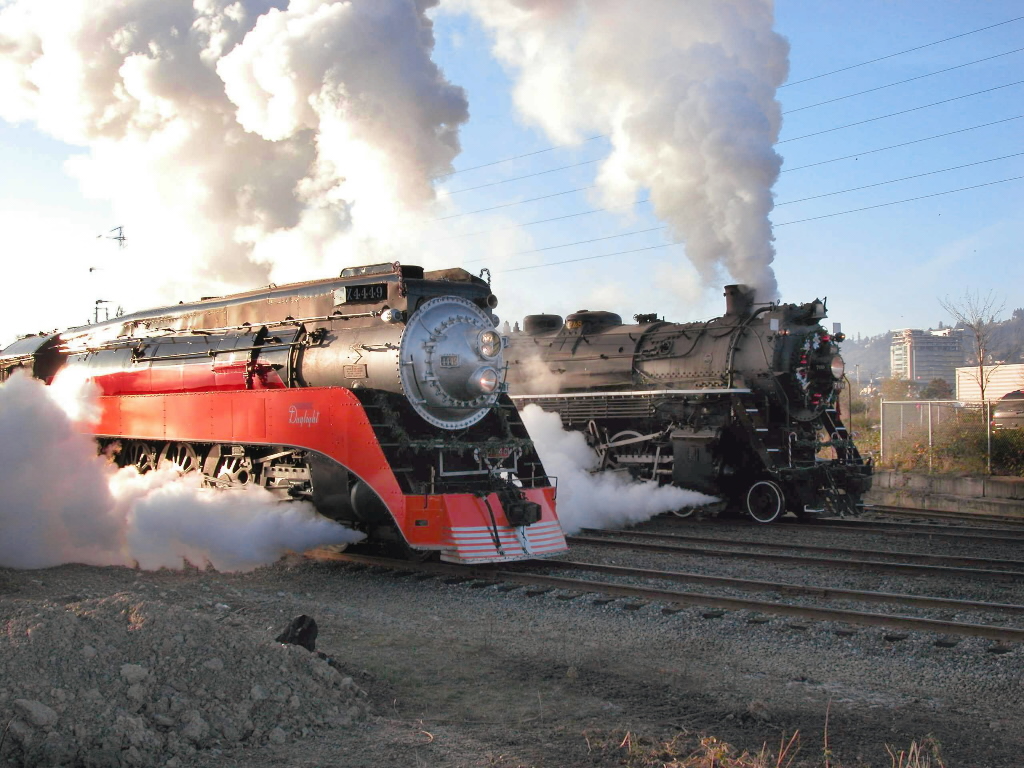
What are they looking at for Standards and Criteria? Here’s what Ch. 114, Section 91 says:
Subd. 2. Standards and criteria. (a) By October 1, 2013, the Environmental Quality Board, in consultation with local units of government, shall develop model standards and criteria for mining, processing, and transporting silica sand. These standards and criteria may be used by local units of government in developing local ordinances. The standards and criteria shall be different for different geographic areas of the state. The
unique karst conditions and landforms of southeastern Minnesota shall be considered unique when compared with the flat scoured river terraces and uniform hydrology of the Minnesota Valley. The standards and criteria developed shall reflect those differences in varying regions of the state. The standards and criteria must include:
(1) recommendations for setbacks or buffers for mining operation and processing, including:
(i) any residence or residential zoning district boundary;
(ii) any property line or right-of-way line of any existing or proposed street or highway;
(iii) ordinary high water levels of public waters;
(iv) bluffs;
(v) designated trout streams, Class 2A water as designated in the rules of the Pollution Control Agency, or any perennially flowing tributary of a designated trout
stream or Class 2A water;
(vi) calcareous fens;
(vii) wellhead protection areas as defined in section 103I.005;
(viii) critical natural habitat acquired by the commissioner of natural resources under section 84.944; and
(ix) a natural resource easement paid wholly or in part by public funds;
(2) standards for hours of operation;
(3) groundwater and surface water quality and quantity monitoring and mitigation plan requirements, including:
(i) applicable groundwater and surface water appropriation permit requirements;
(ii) well sealing requirements;
(iii) annual submission of monitoring well data; and
(iv) storm water runoff rate limits not to exceed two-, ten-, and 100-year storm events;
(4) air monitoring and data submission requirements;
(5) dust control requirements;
(6) noise testing and mitigation plan requirements;
(7) blast monitoring plan requirements;
(8) lighting requirements;
(9) inspection requirements;
(10) containment requirements for silica sand in temporary storage to protect air and water quality;
(11) containment requirements for chemicals used in processing;
(12) financial assurance requirements;
(13) road and bridge impacts and requirements; and
(14) reclamation plan requirements as required under the rules adopted by the commissioner of natural resources.
And as for rulemakings, here’s what Section 105 says:
Sec. 105. RULES; SILICA SAND.
(a) The commissioner of the Pollution Control Agency shall adopt rules pertaining
to the control of particulate emissions from silica sand projects. The rulemaking is exempt
from Minnesota Statutes, section 14.125.
(b) The commissioner of natural resources shall adopt rules pertaining to the
reclamation of silica sand mines. The rulemaking is exempt from Minnesota Statutes,
section 14.125.
(c) By January 1, 2014, the Department of Health shall adopt an air quality
health-based value for silica sand.
(d) The Environmental Quality Board shall amend its rules for environmental
review, adopted under Minnesota Statutes, chapter 116D, for silica sand mining and
processing to take into account the increased activity in the state and concerns over the
size of specific operations. The Environmental Quality Board shall consider whether
the requirements of Minnesota Statutes, section 116C.991, should remain part of the
environmental review requirements for silica sand and whether the requirements should
be different for different geographic areas of the state. The rulemaking is exempt from
Minnesota Statutes, section 14.125.
EFFECTIVE DATE.This section is effective the day following final enactment.
Obama promoting transmission again…
August 12th, 2013
On a bit of a transmission meander lately…
Based on the Fahey/AP articles on transmission lately, I mean really, how often is there anything about transmission in the STrib, I’ve felt something approaching. Perhaps it was the MISO Board of Directors meeting next week in St. Paul (HEY, check this out, you can watch it online, WebEx Information WebEx Password: Sr789456, or even head over to the shindig in St. Paul Hotel!
Then, I was reading the transcript for the PEPCO 2Q Earnings Call (pretty stimulating stuff), where they were talking about the undergrounding in DC:
Seeking Alpha – PEPCO 2Q Earnings Transcript
And here’s a news report and video about it, dig the price, $1.90 – $3.25 a month — that’s reasonable in my cheapskate book:
PEPCO, DC Officials Discuss $1 Billion Underground Wires Plan
That’s exactly what we should be doing. Complaints about “reliability” are distribution line issues, and look at how those utilities out there that are deregulated have cut maintenance to ZERO, think Aug. 13, 2003 (NERC Blackout Report HERE). And as I finish that, I see yet another Fahey/AP article published today, this time about Obama stumping for transmission AGAIN:
As cost of weather related outages rises, White House says grid should be made tougher
So off to the White House, where the PR is about “Protecting the Electric Grid From Increasingly Severe Weather Due to Climate Change” and what’s the real theme? Hey, it’s all about economics!
Economic Benefits of Increasing Grid Resilience to Weather Outages
This builds on his Memorandum earlier this summer:
Which of course builds on his Executive Order promoting transmission and naming projects for “fast tracking,” two of which I was working on at the time, Susquehanna-Roseland and CapX 2020 Hampton-La Crosse. That was:
and the Interagency Rapid Response Team for Transmission
For a list and map of the transmission line pilot projects please visit:
www.doe-etrans.us
AAAAAAAAAAAAAAAAAAAAGH!
Benefits of TRANSMISSION?
August 12th, 2013
DOH! This is NOT rocket science. This came out last month, posted on the CapX 2020 site, and around the same time, there was a PR push about the tax payments, “benefits,” that local governments were receiving for the CapX 2020 transmission lines. This report is all about the “benefits” and not about the costs, let’s be clear on that:
Now I’ll take a look at this…
What it looks like is advance work for the 765kV overlay, for which there is no logical “need” claim. They want to turn “planning” on its head, and put “benefits” at the top, the first item on the check list, in “planning.” I’ll be using a lot of “quotes” here because I’m not buying it.
What they advise, what they’re trying to sell, is that transmission planning should:
1) Identify potential transmission projects that could supplement or replace baseline reliability projects and to develop a comprehensive list of their likely benefits.
2) Estimate the value of as many of the identified benefits as practical.
3) Determine whether the proposed transmission investments would be beneficial overall by comparing the magnitude of estimated economy-wide benefits with estimates of the total costs of the projects.
4) Address cost allocation.
They say that “planners must plan for the highest value first…”
Citing my favorite Posner decision, they quote, “To the extent that a utility benefits from the costs of new facilities, it may be said to have “caused” a part of those costs to be incurred, as without the expectation of its contributions the facilities might not have been built, or might have been delayed.
Benefits should be weighed at the outset when assessing need, in essence benefits supplanting need as reason for a transmission project. Yeah, OK, what’s new???
(still reading)
